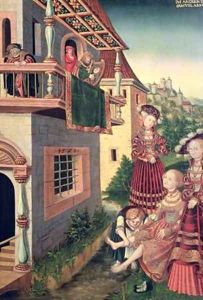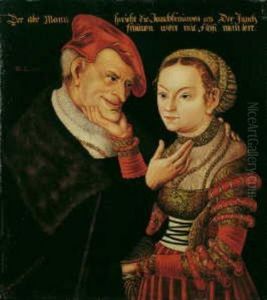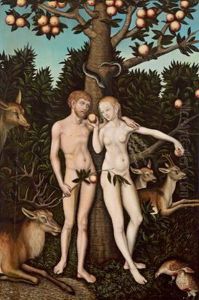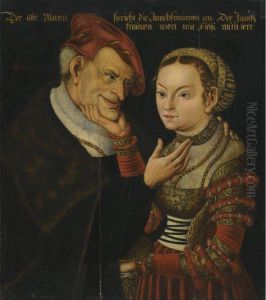Wolfgang Krodel Paintings
Wolfgang Krodel the Elder was a German painter and woodcut artist, whose life and work are emblematic of the Northern Renaissance period. Born in 1500, in the town of Memmingen in the Holy Roman Empire, Krodel's career unfolded during a time of significant religious, social, and artistic upheaval. This era was marked by the Reformation, which not only altered the religious landscape of Europe but also had a profound impact on its artistic expressions. Krodel's work, therefore, straddles a period of transition, reflecting both the medieval traditions and the emerging Renaissance sensibilities.
Krodel likely received his artistic training within the local guild system, which was common in the Germanic regions of the Holy Roman Empire. These guilds played a crucial role in the education and professional development of artists by providing structured apprenticeships. Krodel's art reflects a deep understanding of the technical and thematic concerns of his time, including religious iconography, portraiture, and the nascent genre of landscape painting. His style is characterized by meticulous attention to detail, a keen observation of nature, and an ability to convey complex religious narratives through imagery.
Throughout his career, Krodel was active in Memmingen and possibly other South German cities. His works include altarpieces, woodcuts, and panel paintings, many of which were commissioned by the church and local patrons. These commissions not only attest to Krodel's skill and reputation but also provide insight into the religious and cultural milieu of 16th-century Germany. Despite the religious tumult of the period, Krodel's work often embodies a harmonious blend of Christian themes with the humanist ideals that were gaining prominence at the time.
Wolfgang Krodel the Elder's contribution to the art of the Northern Renaissance is significant, yet his name is less familiar than some of his contemporaries. His oeuvre offers a window into the transitional phase of European art, where the medieval world's mysticism and the Renaissance's human-centered realism coexist. He passed away in 1561, leaving behind a body of work that continues to be studied for its artistic and historical value. Krodel's legacy is that of an artist who navigated a time of great change, capturing the complexities of his era with skill and sensitivity.



